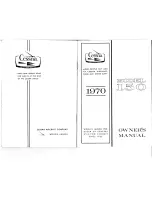
14
A handle is provided to “big-ears” the Estive by pulling the 2
nd
A-
line (counting from the outside). Pull the line, but do not collapse too
much of the wing. Once the big-ears are pulled in, you can adjust their
size can by pulling more on the handle. We advise you to keep at least
the central half of the wing inflated.
For all of these 3 manoeuvres, and for all other phases of flight,
we recommend that you keep hold of the brake handles by passing them
over your wrist. That will allow you to regain normal control instantly.
These emergency manoeuvres are only to be used when
necessary. They reduce the life of the lines, the reinforcements and the
anchor points where the lines join the sail.
The user is warned against performing a spiral dive with the big
ears pulled in. This greatly increases the load on the central lines and will
weaken them prematurely. Use this technique only in extreme necessity
and afterwards have your line strengths checked in our factory.
TURNING AND DIVING
Turns are best initiated by shifting the weight to the inside of the
turn and applying the brake. Once the turn is established, it is easy to co-
ordinate it with the outside brake.
When flying in thermals, the angle of bank is mainly controlled with
the harness:
-
weight towards the outside, flat turn, low sink rate
-
weight towards the inside, steeper turn and increasing.
Diving is initiated by pulling steadily on the inner brake.
LANDING AND COLLAPSING
THE WING IN CASE OF STRONG WIND
We advise the pilot to get into the habit of standing up during the approach sooner
as more gusty are the flying conditions. His position will be better in case of hard
landing.
We do not advise to end the approach in a "big ears" configuration which could be
difficult to recover from in case of deep stall because of gradient situation.
COLLAPSING THE WING
After landing in a strong wind, you should stabilise the wing,
release the brakes and pull evenly on both the C risers.


































